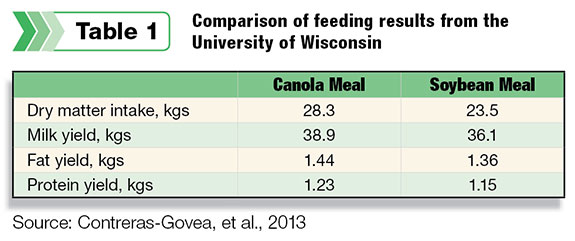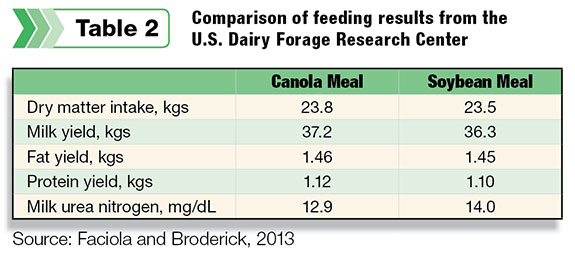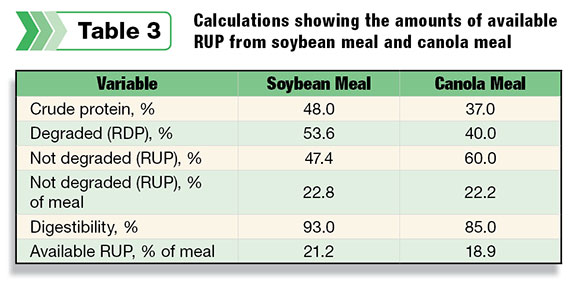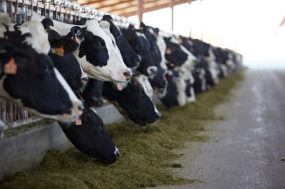As an example, soybean meal is about 48 percent crude protein and canola meal is about 37 percent crude protein. Our experience tells us that, based on the percentage of crude protein, soybean meal should provide a greater protein value pound for pound:
Canola meal value = 37/48 = 77 percent of the price of soybean meal
One improvement to this math used by some ingredient purchasers is to reduce the value of each meal by its soluble protein. Charts comparing protein solubility values for meals usually show that canola meal has more soluble protein than soybean meal.
Let’s assume soybean meal has 15 percent soluble protein and canola meal has 30 percent. This means that of the 48 percent protein in soybean meal, 85 percent is insoluble, while the same value for canola meal would be 70 percent. The calculation is a bit more complicated and largely advantageous to soybean meal:
Canola meal value = (0.7x37)/ (0.85x48) = 63 percent of the price of soybean meal
Many current studies indicate that there is an error in this math. Two very recent feeding trials were reviewed at the American Dairy Science Association meetings, held in Indianapolis July 8-12.

In the first study (Table 1), soybean meal was replaced by canola meal in diets containing 17.3 percent crude protein.
These diets were fed for the duration of the nine-week feeding period. Milk yield, fat yield and protein yield were all higher with the canola meal diet.
This means that canola meal value, on a protein basis, is at least as good as soybean meal.
The second study (Table 2) provides another piece to the puzzle. Soybean meal was again substituted with canola meal.
However, this time, the diets only contained 16.5 percent crude protein.
There was a significant improvement in milk yield and protein yield, but no difference in fat yield when canola meal was substituted for soybean meal.
The revelation was the significantly lower milk urea nitrogen (MUN) values with the canola meal diet.
MUN values are often higher when the degraded portion of the protein (RDP) is high. These results show that less of the protein from canola meal was degraded. Canola meal may have higher soluble protein, but less of the protein ends up wasted as MUN.
So what was missing in our math, and how should we be evaluating proteins for dairy cows? The original calculations did not include the rates at which both the soluble and insoluble protein fractions are broken down in the rumen. Therefore, we tend to underestimate the rumen-undegraded protein (RUP) each meal supplies.
Untreated soybean meal is rapidly degraded in the rumen, while canola meal is slowly degraded. Table 3 shows that 47.4 percent of the soybean meal is not degraded.
However, under the same calculation conditions, 60 percent of the canola meal was not degraded by the rumen microbes.
This means that kilogram for kilogram, canola meal and soybean meal provide about the same amount of RUP.
Even after taking digestibility into account, the value is fairly respectable.
The rates make an important contribution to understanding and valuing the ingredients used in feed formulation. The conclusion:
Canola meal value = 18.9/21.2 = 89 percent of the price of soybean meal. PD
References omitted due to space but are available upon request. Click here to email an editor.

- Essi Evans
- Technical Advisory Services Inc.








